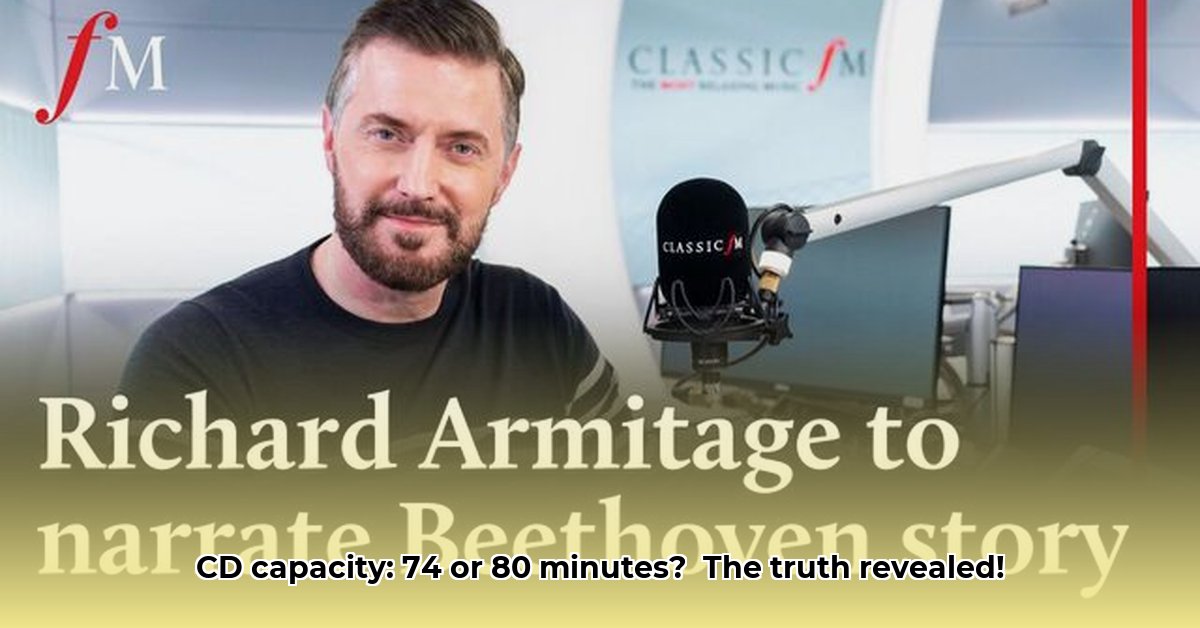
Understanding CD Capacity: More Than Just Minutes
Ever wondered precisely how much music a CD can hold? While the common answer is 74 or 80 minutes, the reality is more nuanced. This article will clarify the factors affecting CD capacity and provide practical advice for musicians and producers. We'll demystify the technical aspects and help you maximize your CD's potential.
The Hidden Data: Error Correction and Metadata
A CD isn't simply a vessel for music; it requires additional data for reliable playback. This includes error correction codes (ECC), which protect against scratches and dust, and metadata, containing track titles, artist information, and album art. These components consume valuable space, impacting the actual usable audio time. Think of it like packing a suitcase – the clothes are your music, but you need space for packing supplies too.
Usable Space vs. Advertised Capacity: The Reality Check
While a CD might be advertised as holding 74 or 80 minutes, the actual usable space is less. A safe estimate is around 70-75 minutes to ensure reliable playback and account for error correction and metadata overhead. This buffer prevents playback issues and ensures smooth transitions between tracks. Do you know how much of your overall CD space is dedicated to this overhead? It's a significant portion!
CD Types: Standard vs. Extended Play
The type of CD also influences capacity:
| CD Type | Capacity (Approximate) | Notes |
|---|---|---|
| Standard CD-DA (Red Book) | Around 74 minutes | The most common type. |
| Extended-Play CD-DA | Around 80 minutes | Less common, offering slightly more recording time. |
These differences arise from variations in data encoding and error correction levels. While the difference isn't drastic, it explains the range of figures often cited.
Mastering Your CD: Maximizing Space and Sound Quality
For musicians and producers, understanding these limitations is crucial. Here's how to maximize your CD's audio capacity:
Precise Track Length Planning: Use Digital Audio Workstation (DAW) software to accurately estimate recording time and avoid exceeding your usable space. This careful pre-planning prevents wasted space and frustration.
Minimize Inter-Track Gaps: Reduce the silent gaps between tracks to their absolute minimum using audio editing software. This seemingly minor optimization can free up significant space. Did you know that even tiny gaps can add up to several minutes?
Professional Mastering: A skilled audio engineer can optimize your audio for size without sacrificing sound quality. Mastering is a crucial step in ensuring compatibility with CD formatting standards and maximizing viable playback time. Many engineers offer advice on how best to balance audio quality with file size constraints.
Replication Services: Some CD replication services offer various compression options. This tradeoff increases usable space but potentially impacts sound quality. Consider this carefully when finalizing your master.
Calculating Usable Audio Time: A Deeper Dive
The theoretical capacity of a CD doesn't translate directly to usable audio time. The formula isn't precise due to varying error correction overhead, but a rough calculation involves:
Raw Capacity: A standard CD holds approximately 650 MB.
Audio Data: A typical 16-bit, 44.1 kHz stereo audio track uses about 176 KB per second.
Overhead: Conservatively estimate 10-15% overhead for error correction and metadata.
Subtract the overhead from the raw capacity to determine the approximate usable space for audio data and then convert it to minutes using the audio data calculation. Remember, this is just an estimate.
Key Takeaways: Making the Most of Your CD
- The advertised capacity (74 or 80 minutes) is a theoretical maximum. The actual usable audio time for music is less due to error correction and metadata.
- Careful planning, mastering, and understanding the different CD types are paramount in maximizing your CD's usable audio space.
- Always account for the overhead of metadata and error correction during your production process. This planning methodology allows for successful distribution without technical glitches.
- There is no single magic number because variables such as compression and mastering techniques can change the usable space.
This information should empower you to successfully record and master your music onto CDs, maximizing the space available and producing a high-quality audio experience for your listeners.